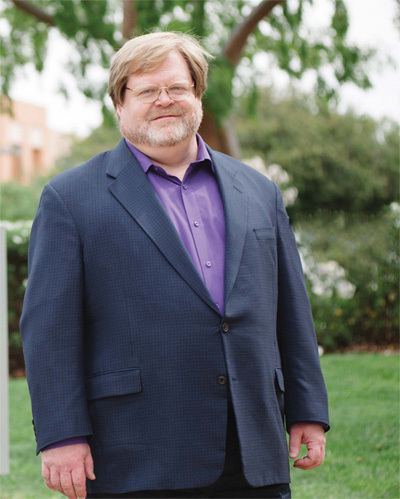From Foundation, To Darkest Days, To Finest Hour — The Jazz Pharmaceuticals Success Story

By Rob Wright, Chief Editor, Life Science Leader
Follow Me On Twitter @RfwrightLSL

The darkest days of Jazz Pharmaceuticals (NASDAQ: JAZZ) came in April 2009. “Our stock price was 53 cents a share,” recalls the company’s cofounder, chairman, and CEO, Bruce Cozadd. Having negative equity, $120 million in long-term debt, around $15 million in cash, and being unable to raise capital, Jazz was in serious trouble. “We were in default on our debt, literally talking to bankruptcy attorneys every day,” Cozadd says. The decision facing Jazz leadership in December 2008 had been whether to make the next interest payment to debt holders or to fund an ongoing clinical trial. “We had enough money in the bank to make the payment, but we didn’t think we had enough to make that payment and continue the clinical trial,” shares Cozadd. By not making the debt payment, the company was at risk of being shut down. Nevertheless, the leadership of Jazz decided to use the money toward continuing the clinical trial.
Six years later, with a market cap over $11.3 billion, the stock trading over $180 a share, and Jazz being viewed as one of the hottest Big Pharma targets of acquisition, it is easy to say they made the right decision. “Sure, it’s a great story now. But at the time we didn’t know it would work,” Cozadd admits.
After such an experience, you would expect him to point to cash flow management as being the critical component of the Jazz success story. But instead, it’s the company’s culture that he regards as the linchpin, and surprisingly, that emphasis on a strong corporate culture was in the plans from the company’s genesis.
Bruce Cozadd
Culture First; Products Second
Most companies create their organizational culture well after developing their first product. Cozadd and his cofounders took the opposite approach. In fact, the company did not even have a product or specific R&D program when it was launched in 2003. Sure, Cozadd had some ideas of what the company might want to work on, but his primary focus was to build a team capable of creating a strong corporate culture. That meant choosing partners who were like-minded regarding the value of a corporate culture. And since Cozadd had learned the importance of culture during his time at ALZA Corp. (see sidebar), he reached out to two former colleagues — Sam Saks (immediate past CEO of Jazz Pharmaceuticals) and Bob Myers (current president and CEO of Orbus Therapeutics).
The three became the cofounders of Jazz, and then they all quickly reached out to other former ALZA colleagues to join the company’s ranks. Cozadd believes this was important because it gave the team instant credibility. “Being an intact, proven team with collective success, not just a group of individuals with individual successes, gave us the ability to go out and raise capital pretty aggressively.”
Creating The Jazz Culture
According to Cozadd, creating a company culture isn’t a simple exercise of asking the question, “What kind of culture do you want to have?” and then coming up with a list of principles and values. “It’s how you define those values. It’s really about how you want to treat people,” he says. Therefore, the management team had a daylong meeting to talk about values and what culture was going to mean to them. They discussed terms such as collaboration and what that would mean inside the organization and with external entities such as regulators, payors, and patient advocacy groups. They talked about integrity (“If you make a commitment to somebody either inside or outside the organization, you mean it.”) and the importance of transparent communication. Additional meetings were called to discuss how they would recruit people, the specific attributes they were looking for in a candidate, and how they would communicate the company culture throughout the hiring process.
Bruce Cozadd
Cozadd likes to say to the Jazz talent acquisition group, “It’s not how you treat the top candidate you can’t wait to hire, but how you treat the candidates you don’t think are a good fit, because they are going to go talk to their friends about their Jazz experience.”
Eventually the team identified five core values — integrity, collaboration, passion, pursuit of excellence, and innovation. In addition, the group determined it wanted the organization to be not just a great place to work but also one that puts patients first.
What’s In A Name
It’s no accident that Cozadd’s company shares its name with a style of music that embraces improvisation but also cohesion. Jazz musicians are mostly known for being great soloists and virtuosos of their instruments. But great jazz musicians must also be able to play well together. That’s the kind of corporate culture the company’s management team wanted from the beginning. “This concept of individual excellence, but playing well with others, is what I was looking for in a management team,” Cozadd says. As for improvisation, he says in the business world that equates to innovation. “One of the challenges of the biopharmaceutical industry is innovating in a highly regulated environment,” he states. “There are things you can play around with, and there are things you can’t – just like in jazz music.”
Today, the importance of company culture permeates Jazz from the onboarding process and employees’ performance reviews to recognition and promotions. “During your performance review, don’t tell me how well you did in meeting the objectives of your job, tell me how you met those objectives,” Cozadd says. “Did you run over everybody and leave bodies in your wake? If so, that’s not the culture we want – even if you did meet your goals.”
Cozadd believes the key to creating a culture like Jazz’s is to provide an environment of meaningful work where people are doing what they are passionate about in a place they are proud to be a part of. And so far, that philosophy seems to be working out.
What Are You Doing To Stay On Top Of Your Company’s Culture?
 “Is the culture what I say it is?” That’s the question Bruce Cozadd, cofounder, chairman, and CEO of Jazz Pharmaceuticals, says you have to keep asking yourself as an executive. Cozadd does two things to try to stay on top of Jazz’s corporate culture. “First, I spend a lot of time with new employees,” he shares. “I invite new employees in for an hour-long breakfast meeting that is relatively unscripted and includes small, cross-functional groups.” He says it’s important to meet with new employees specifically because their experience of the company’s culture is, by definition, whatever the culture is today. “If I ask a tenured employee to describe the Jazz company culture, they may give me an answer formed by something that happened to them three years ago,” he explains. “New employees aren’t reflecting back to the past to define your company’s culture. What they are telling you is what they think the culture is like today.”
“Is the culture what I say it is?” That’s the question Bruce Cozadd, cofounder, chairman, and CEO of Jazz Pharmaceuticals, says you have to keep asking yourself as an executive. Cozadd does two things to try to stay on top of Jazz’s corporate culture. “First, I spend a lot of time with new employees,” he shares. “I invite new employees in for an hour-long breakfast meeting that is relatively unscripted and includes small, cross-functional groups.” He says it’s important to meet with new employees specifically because their experience of the company’s culture is, by definition, whatever the culture is today. “If I ask a tenured employee to describe the Jazz company culture, they may give me an answer formed by something that happened to them three years ago,” he explains. “New employees aren’t reflecting back to the past to define your company’s culture. What they are telling you is what they think the culture is like today.”
The other thing Cozadd does to keep tabs on the Jazz corporate culture is a yearly, all-employee, anonymous survey, which includes questions about culture. The company often gets a 90+ percent participation rate with the survey. Employee comments from last year’s survey consisted of 57 pages. “I read every comment,” Cozadd says. But conducting a survey and reading comments is just the start of the process. “I’m very transparent about reflecting back to the organization as to what I heard and how it compares to previous years,” he attests. Because of employee turnover, Cozadd realizes survey results and comments won’t be a perfect match from year to year. However, he feels it is still a good tool to provide you with key trends. “I think being willing to solicit honest feedback in an anonymous forum is also helpful to staying on top of your company’s culture.”
The Birth Of A Corporate Culture Philosophy
Bruce Cozadd, cofounder, chairman, and CEO of Jazz Pharmaceuticals, says his most important corporate culture education began in 1991 when he was hired by ALZA Corp. The company was founded by Dr. Alejandro Zaffaroni, a Uruguayanborn biochemist credited with starting at least 10 companies in Silicon Valley and mentoring a number of start-up entrepreneurs. “I was inspired by his company vision not only from scientific and technical standpoints but also from a business standpoint,” says Cozadd. He describes his 10-year experience at ALZA as being “very formative” to the importance he now places on being purposeful and proactive when it comes to creating and managing a company’s culture. “I had nothing to do with shaping the culture at ALZA,” Cozadd admits. “The company had been around for decades before I joined, but it was powerful, and it was consistent. To this day, almost 15 years after the end of ALZA, people who were there still talk about the ALZA culture.” The end of ALZA came through acquisition by J&J for $10.5 billion in 2001.
After taking some time off to focus on his wife’s career and spend time with his young children, Cozadd began looking to get back into the biopharmaceutical business. “When I started looking at CEO positions of bioscience companies in the San Francisco Bay Area, I found some businesses that were appealing, but often their corporate cultures were not,” he explains. “I had to decide if I wanted to go somewhere and try to change the existing culture, which I viewed as a three-to five-year project, or start a company with a culture that is exactly what I want.”
Two Unusual Challenges
 As a new start-up, Jazz Pharmaceuticals needed what every other fledging business needs — capital. In particular, the company was seeking to raise $250 million in its first round, a sum Bruce Cozadd, cofounder, chairman, and CEO of Jazz, says was unheard of at the time. But the amount of money it wanted wasn’t the only problem; it was how it wanted to spend it that really became a stumbling block for investors. “We weren’t saying give us $250 million and we’ll invest it in that product or this R&D program. Instead, we said: ‘Give us a pool of money so we can make multiple investments in commercial and R&D products,’” Cozadd explains. The idea was analogous to the company playing the role of an investment fund (i.e., a portfolio approach) and would be better for everyone, including shareholders. “If an R&D program was limping along and the question was, do you kill it or not, it’s a lot easier to kill it if it’s one of your programs and not your only or most advanced program,” Cozadd states. While applying this unbiased approach sounds good in theory, imagine telling investors they were investing in a blind pool with nothing prespecified. “Of course, as members of our board, they were going to get to vote on major expenditures of capital,” he relates. “I just couldn’t tell them at the outset what we were going to be investing in.”
As a new start-up, Jazz Pharmaceuticals needed what every other fledging business needs — capital. In particular, the company was seeking to raise $250 million in its first round, a sum Bruce Cozadd, cofounder, chairman, and CEO of Jazz, says was unheard of at the time. But the amount of money it wanted wasn’t the only problem; it was how it wanted to spend it that really became a stumbling block for investors. “We weren’t saying give us $250 million and we’ll invest it in that product or this R&D program. Instead, we said: ‘Give us a pool of money so we can make multiple investments in commercial and R&D products,’” Cozadd explains. The idea was analogous to the company playing the role of an investment fund (i.e., a portfolio approach) and would be better for everyone, including shareholders. “If an R&D program was limping along and the question was, do you kill it or not, it’s a lot easier to kill it if it’s one of your programs and not your only or most advanced program,” Cozadd states. While applying this unbiased approach sounds good in theory, imagine telling investors they were investing in a blind pool with nothing prespecified. “Of course, as members of our board, they were going to get to vote on major expenditures of capital,” he relates. “I just couldn’t tell them at the outset what we were going to be investing in.”
Eventually, the funding came through, but the company faced a second hurdle that actually came from the very thing responsible for helping land those investors – the experienced management team. The value of an intact team and shared experiences may have been beneficial to raising funds, but over the long term it became a liability. “When we ran into a new and serious problem and looked around the management team table for solutions, we were all turning to the same page in the same playbook,” Cozadd states. What Jazz didn’t have was 10 different people sharing 10 different scenarios from their professional experience. “It’s diversity of thought that often gets you to the best answer,” he affirms. “With a diverse team to start with, I don’t think we could have raised the capital we did. Yet, without diversifying the team over time, I don’t think we could have succeeded in the long run.”
Does Your Culture Build Loyalty?
Jazz Pharmaceuticals, like many companies during the economic meltdown of 2008-2009, was unable to raise capital and had to cut expenses to stay alive. “We downsized by about 50 percent,” says Bruce Cozadd, cofounder, chairman, and CEO. “First, we informed each employee individually. But then I sent an email to the whole company explaining what we were doing and why. Further, I informed everyone we would be having a meeting the next morning, inviting even those people who had just been let go to attend.” During the meeting Cozadd didn’t mince words for the mixed audience; he was transparent. “I said, ‘Look around the room. The people you thought of as valuable colleagues yesterday, part of your team and the fabric of this company, did not suddenly get less talented in the last 24 hours. This isn’t about them. It’s about the company’s need to survive.’” By having this kind of meeting, Cozadd wanted to minimize the awkwardness between employees that often occurs during a layoff. Eventually, the company did bounce back, and many of those employees were rehired. Cozadd says the fact that these employees chose to come back to work is a clear indicator that Jazz has a strong corporate culture.
“It is not how you treat your star performer whom you’re promoting but how you treat the employees you have to let go. What are they going to say about the company after they walk out the door?” Cozadd says.
